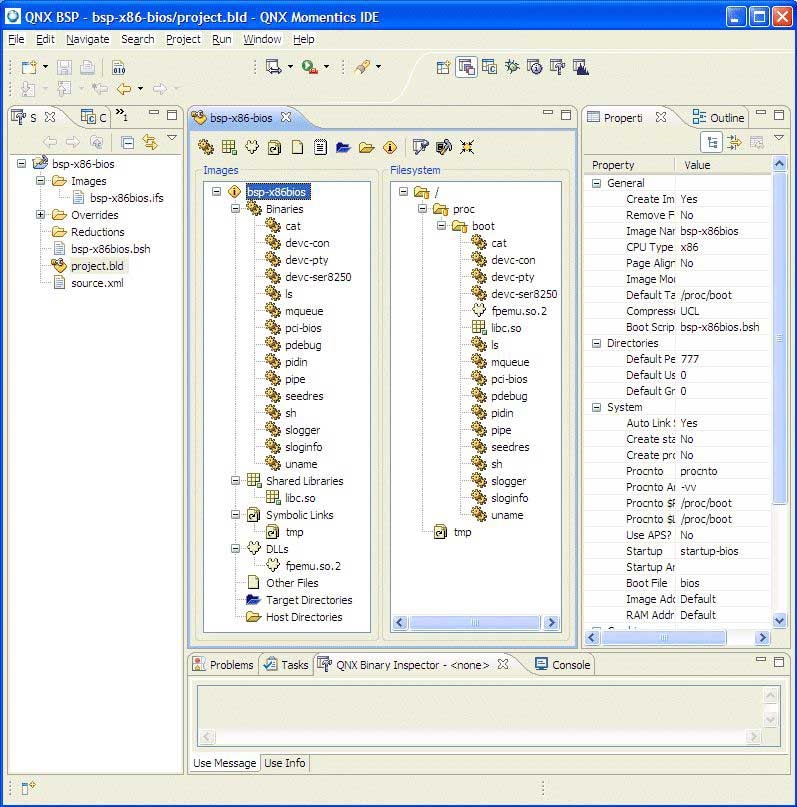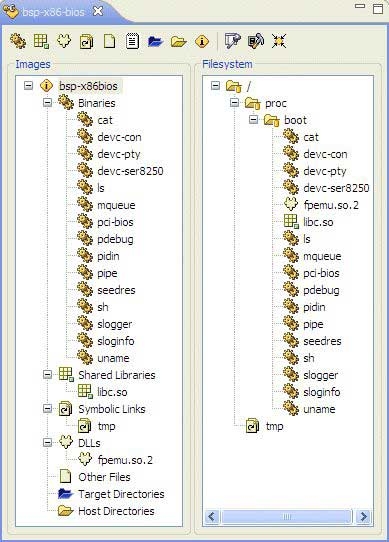When you open the QNX System Builder to create a project, you have the option to either import or customize an existing buildfile in order to generate an image, or create one from scratch. The QNX System Builder editor lets you select the components (the binaries, DLLs, and libraries) that you want to incorporate into your system image. As you add a component, the QNX System Builder automatically adds any shared libraries required for runtime loading. For example, if you add the telnet application to a project, the QNX System Builder will automatically include libsocket.so to ensure that telnet can run.
The QNX System Builder won't automatically include the necessary DLLs because they aren't listed in the NEEDED section for a given binary.
For more information, see Managing your images
The QNX System Builder contains a Serial Terminal view for interacting with your board's ROM monitor or QNX Initial Program Loader (IPL) and for transferring images (using the QNX sendnto protocol). The QNX System Builder also has an integrated TFTP Server that lets you transfer your images to network-aware targets that can boot via the TFTP protocol.
When you open the QNX System Builder to create a project, you have the option to either import or customize an existing buildfile in order to generate an image, or create one from scratch. The QNX System Builder editor lets you select the components (the binaries, DLLs, and libraries) that you want to incorporate into your system image. As you add a component, the QNX System Builder automatically adds any shared libraries required for runtime loading. For example, if you add the telnet application to a project, the QNX System Builder will automatically include libsocket.so to ensure that telnet can run.
The QNX System Builder won't automatically include the necessary DLLs because they aren't listed in the NEEDED section for a given binary.
For more information, see Managing your images.
Using standard QNX embedding utility (mkifs, mkefs), the QNX System Builder can generate configuration files for this tool that can be used outside of the IDE for scripted/automated system building. As you do a build, a Console view shows the output from the underlying build command. You can use the mksbp utility to build a QNX System Builder project.bld from the command-line; mksbp automatically calls mkifs or mkefs, depending on the kind of image being built to build the image.
Here's what the QNX System Builder perspective looks like:

One of the main areas in the QNX System Builder is the editor, which presents two panes side by side:

- Images
- Shows all the images you're building. You can add or remove binaries and other components, view their properties, etc.
- Filesystem
- Shows the components of your image arranged in a hierarchy, as they would appear in a filesystem on your target.